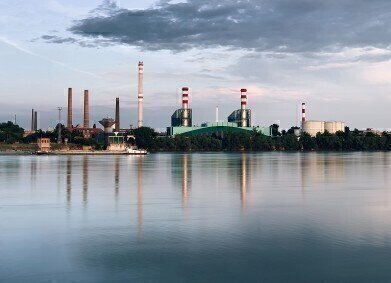Air Monitoring
How Are Medium vs Large Combustion Plants Defined?
Mar 13 2021
The industrial sector is responsible for a significant proportion of harmful emissions across Europe. But while there are many hundreds of thousands of combustion plants across the EU, they are not all created equal. For example, there is a substantial difference between medium combustion plants (MCPs) and large combustion plants (LCPs).
Because of these differences, the two entities are treated separately, with their own bespoke piece of legislation regulating their emissions. But how exactly are these definitions arrived at? This informative article should tell you everything you need to know regarding the differences between MCPs and LCPs, as well as the relevant directives which govern both and how this is expected to affect their environmental footprint going forwards.
Size matters
As the names suggest, the main differentiating factor between MCPs and LCPs is their size. To allow for a simplified interpretation of the two denominators, this is defined in terms of their thermal input.
MCPs are defined as any combustion plant with a thermal input of between 1 Megawatt thermal (1MWth) and 50MWth. Large combustion plants, on the other hand, are defined as any plant with a thermal input of over 50MWth. By defining the two designations in these transparent terms, confusion is easily avoided when it comes to deciding into which bracket a particular facility falls.
How are MCPs regulated?
The emissions of fuels combusted in an MCP are governed by the Medium Combustion Plant Directive (MCPD), covering the allowable levels of nitrogen oxides (NOx), sulphur dioxide (SO2) and dust that a plant can emit. The directive was first introduced in 2013 as part of the EU’s Clean Air Policy Package and its limits became legally binding for all new plants in 2018. All existing plants will have until 2025 or 2030 (depending on their size) to retrofit their facilities and ensure they comply with the new limits, which will help to reduce their emissions of the aforementioned pollutants in the long term.
How are LCPs regulated?
The emissions emanating from LCPs are regulated by the Industrial Emissions Directive (IED), first implemented in 2011 and transposed into the national laws of EU member states in 2013. The IED relies upon Best available techniques REFerence documents (BREFs) to delineate the legal thresholds for several contaminants produced by LCPs. Those documents also include guidance regarding the monitoring mechanisms which must be used to ensure that those limits are being complied with. For those interested, the article The European Union’s Large Combustion Plant BREF – Monitoring and Compliance Requirements has a lot more detailed and useful information on the subject.
Digital Edition
IET 34.2 March 2024
April 2024
Gas Detection - Biogas batch fermentation system for laboratory use with automatic gas analysis in real time Water/Wastewater - Upcycling sensors for sustainable nature management - Prist...
View all digital editions
Events
Apr 30 2024 Melbourne, Australia
Apr 30 2024 Birmingham, UK
May 03 2024 Seoul, South Korea
May 05 2024 Seville, Spain
May 06 2024 Minneapolis, MN, USA


















